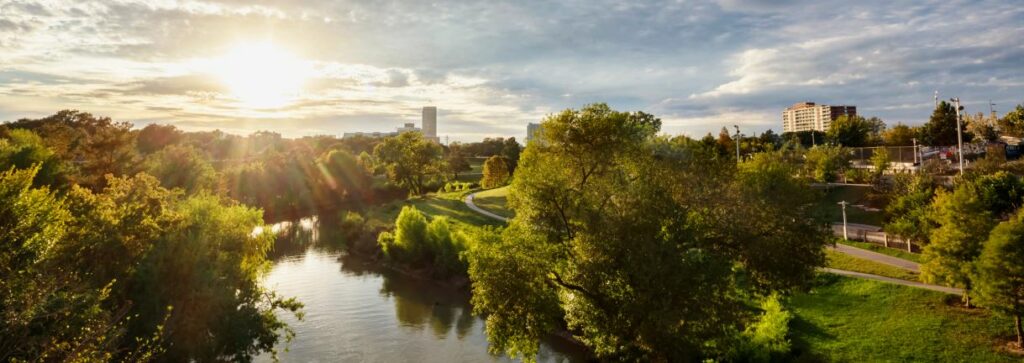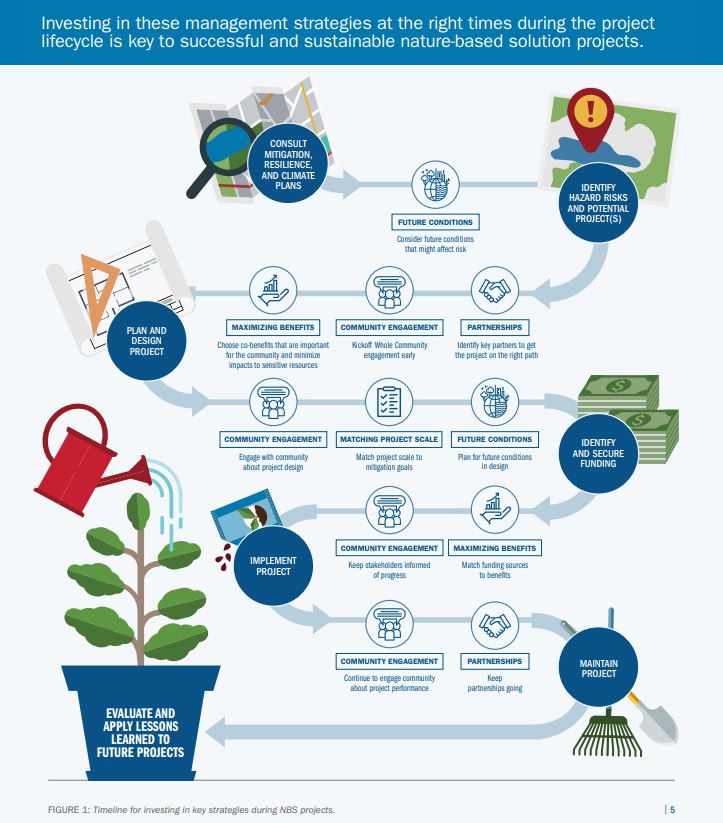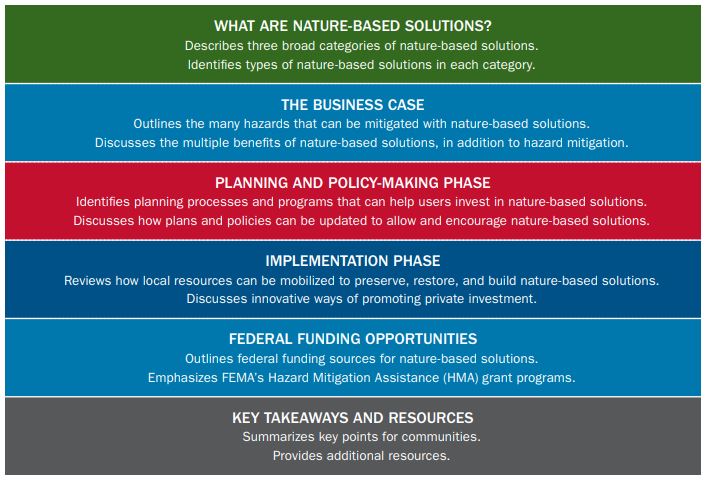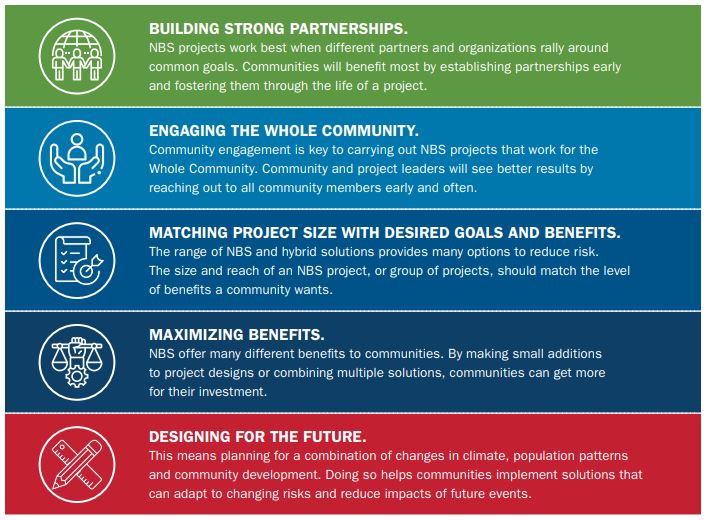
A series of guides to help community leaders use nature-based solutions to minimize the risks of natural hazards.
Building Community Resilience with Nature-Based Solutions
FEMA’s Guide for Local Communities
Overview
Building Community Resilience with Nature-Based Solutions is a series of guides to help community leaders use nature-based solutions (NBS) to minimize the risks of natural hazards. These are non-technical guides that outline how communities can plan, develop partnerships, and invest funds in ways that will contribute to the effectiveness and sustainability of NBS.
The first guide, Building Community Resilience With Nature-Based Solutions: A Guide for Local Communities (A Guide for Local Communities), makes the case for using NBS. It tells readers how to include NBS in community planning, and it goes over funding options. The second guide, Building Community Resilience with Nature-Based Solutions: Strategies for Success (Strategies for Success) outlines five strategies to help implement NBS projects. These strategies are meant to provide community leaders with resources for success, including case studies about how others have used the strategies to advance their project.

A Guide for Local Communities
The objective of this guide is to help communities identify and engage staff and resources that can be used to implement NBS to build resilience to natural hazards, which may be exacerbated by climate change. Local communities can use the guide to learn about nature-based solutions and weigh their value for the community. They can also use the guide to help them transition from planning to action. The Guide for Local Communities is divided into six sections. The guide is written so that communities can go to whichever section is most relevant to them, based on their knowledge and interests.
Structure of the Guide:

Strategies for Success
The objective of this guide is to help communities implement NBS projects. The guide outlines five strategies that follow an be applied across projects so they meet risk reduction, climate resilience and other community goals. The guide also shares case studies about how others have used the strategies to advance their project.
The Five Strategies:





